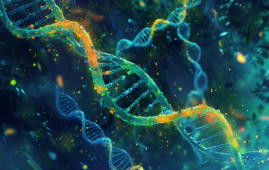

More moms with sickle cell disease (SCD) face pregnancy problems like cesarean delivery and preeclampsia compared to those with sickle cell trait (SCD trait), according to a study at the 65th ASH Annual Meeting & Exposition. But, if you have the SCD trait, you’re more likely to deal with low birth weight and gestational diabetes mellitus (GDM).
Researchers from the University of Missouri at Kansas City looked back at around 30,000 patient visits in the Health Facts database.
The study looked at different types of SCD, like hemoglobin SS, hemoglobin S beta 0 thalassemia, hemoglobin S beta + thalassemia, and hemoglobin SC disease. They also considered SCD trait-hemoglobin AS.
The numbers reveal that patients with SCD have higher chances of having a cesarean delivery (76.43% vs. 13.76%) and preeclampsia (75.92% vs. 5.43%) compared to patients with the SCD trait.
Additionally, patients with SCD experience more cerebrovascular accidents, sepsis, septic shock, and VOC incidence compared to those with SCD trait.
About a quarter (25.00%) of patients with the SCD trait have asymptomatic bacteriuria, while it’s only 0.08% in SCD patients. Urinary tract infection rates are also higher in SCD trait patients (0.02%) compared to SCD patients (0.00%).
When it comes to pregnancy complications like GDM, low birth weight, and preterm birth, the SCD trait group faces higher risks compared to the SCD group. Specifically, GDM is 3.09% in SCD trait patients compared to 0.00% in SCD patients. In SCD trait patients, there’s a 0.61% low birth weight rate versus 0.17% in SCD patients. Finally, preterm birth rates are 0.78% and 0.44% in SCD trait and SCD patients, respectively.
More information: Incidence of maternal and perinatal morbidity in sickle cell disease and sickle cell trait patients during pregnancy. Abstract #3898. Presented at the 65th American Society of Hematology Annual Meeting & Exposition; December 9-12; San Diego, California.
Source: Blood
more recommended stories
 Phage Therapy Study Reveals RNA-Based Infection Control
Phage Therapy Study Reveals RNA-Based Infection ControlKey Takeaways (Quick Summary) Researchers uncovered.
 Pelvic Floor Disorders: Treatable Yet Often Ignored
Pelvic Floor Disorders: Treatable Yet Often IgnoredKey Takeaways (Quick Summary) Pelvic floor.
 Urine-Based microRNA Aging Clock Predicts Biological Age
Urine-Based microRNA Aging Clock Predicts Biological AgeKey Takeaways (Quick Summary) Researchers developed.
 Circadian Control of Neutrophils in Myocardial Infarction
Circadian Control of Neutrophils in Myocardial InfarctionKey Takeaways for HCPs Neutrophil activity.
 E-Cigarette Use and Heart Attack Risk in Former Smokers
E-Cigarette Use and Heart Attack Risk in Former SmokersKey Takeaways for Clinicians and Nurses.
 36-Week Pre-eclampsia Screening May Reduce Term Risk
36-Week Pre-eclampsia Screening May Reduce Term RiskA New Preventive Strategy for Term.
 Cardiovascular Risk and Sudden Cardiac Death in Diabetes
Cardiovascular Risk and Sudden Cardiac Death in DiabetesRising Sudden Cardiac Death (SCD) Risk.
 Poor Kidney Function and Alzheimer’s Biomarkers Explained
Poor Kidney Function and Alzheimer’s Biomarkers ExplainedPoor kidney function may influence levels.
 Walking Speed Before Hip Replacement Predicts Recovery
Walking Speed Before Hip Replacement Predicts RecoveryNew Evidence Points to a Simple,.
 Neuroblastoma Drug Combo Extends Survival in Models
Neuroblastoma Drug Combo Extends Survival in ModelsA Promising Shift in High-Risk Neuroblastoma.

Leave a Comment